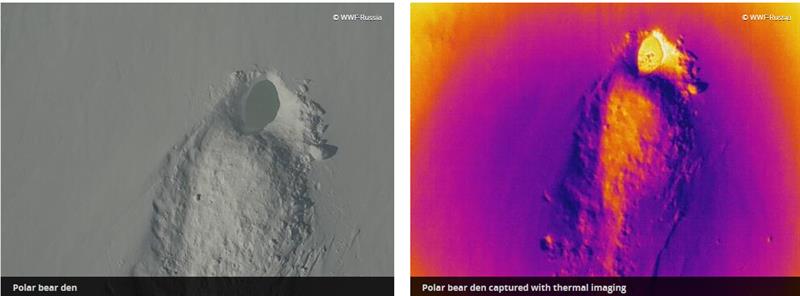For the trial, WWF provided the Wrangel Island Nature Reserve with four quadcopters, including two with thermal imagers, alongside drone control courses to pilot the devices through freezing temperatures of -25oC.
Traditional polar bear counting methodology involves groups of specialists riding snowmobiles around the areas with the highest concentration of maternity dens. Polar bears largely construct their dens during November and December on the Wrangel and Herald islands lying between the Chukchi and East Siberian seas.
According to the wildlife group, this work is extremely dangerous and “painstaking” while a drone with a thermal camera can “help to overcome these difficulties”. The temperature inside the den is much higher than outside, and when flying around the territory, a thermal halo illuminating these habitats can be seen on the drone control panel and be recorded using a high-resolution camera.

Four successive drone launches spanning a total flight time of close to 2 hours allowed the Reserve’s team to identify a potential den and examine the female bear and her two cubs inside.
Leonid Zaika, head of the department of ecotourism development at the Wrangel Island Nature Reserve, said: “We gained valuable experience and learned from our mistakes [using a drone camera], which will allow for a detailed analysis and preparation for next year’s census. The resulting photo and video material is of great scientific value and with its help, specialists will understand the age and condition of the animals, and the distinctive features of their behaviour.
“Most importantly, we understood that the use of drones in polar bear monitoring makes it safer and greatly facilitates the search and study of both the dens and the animals.”



